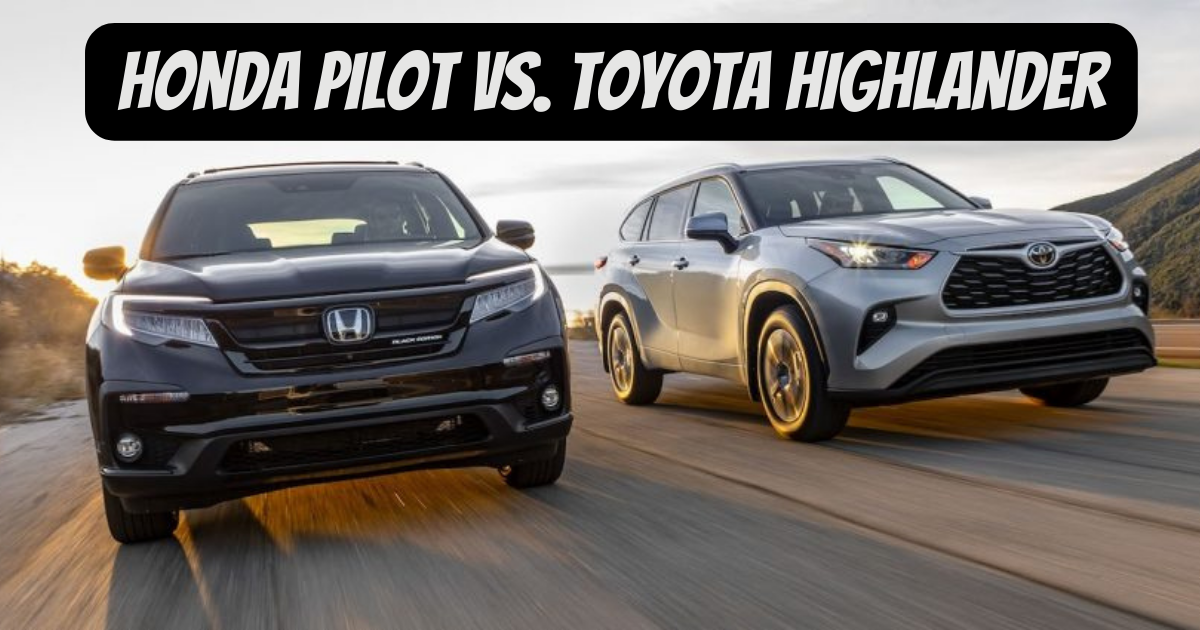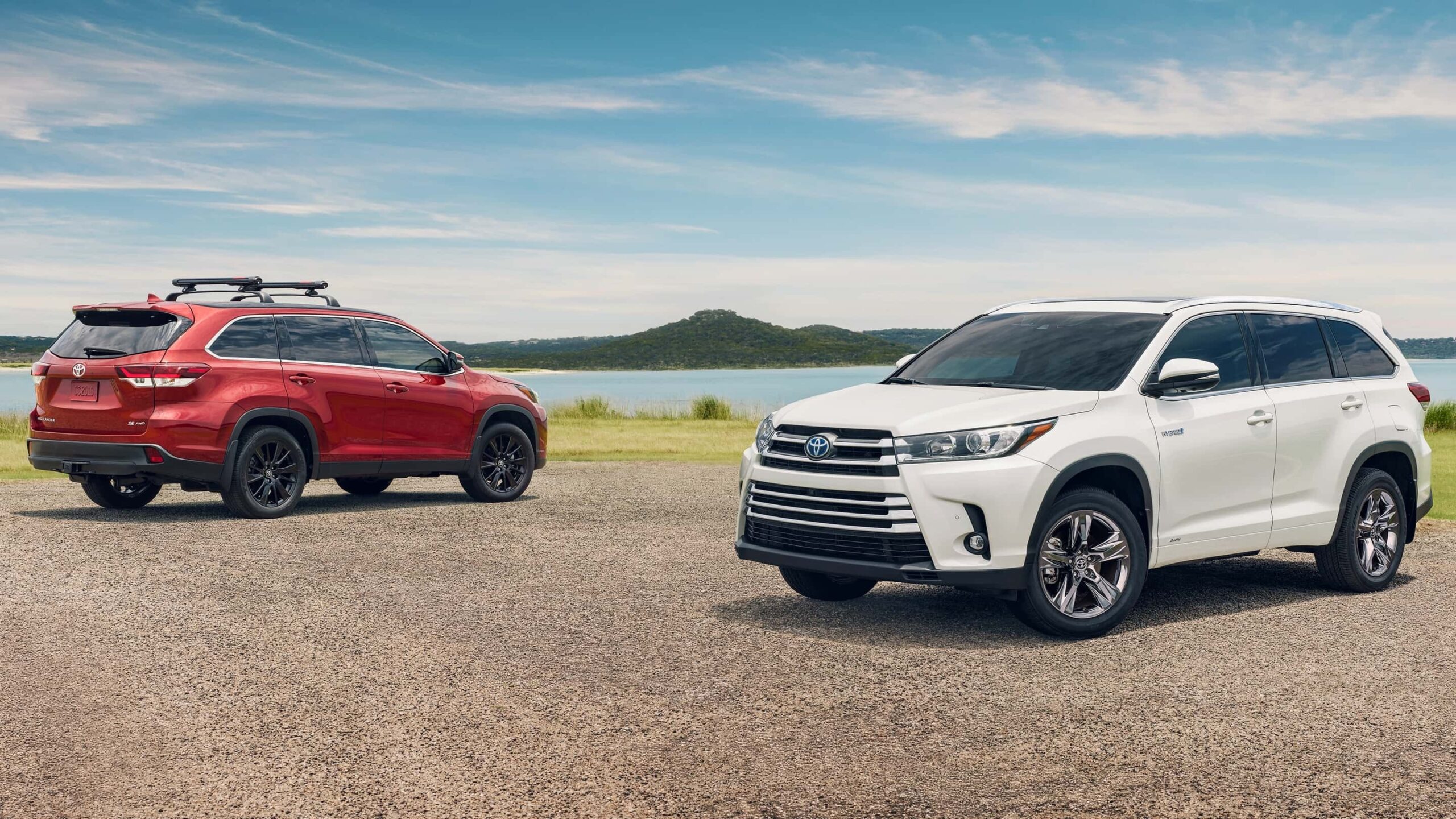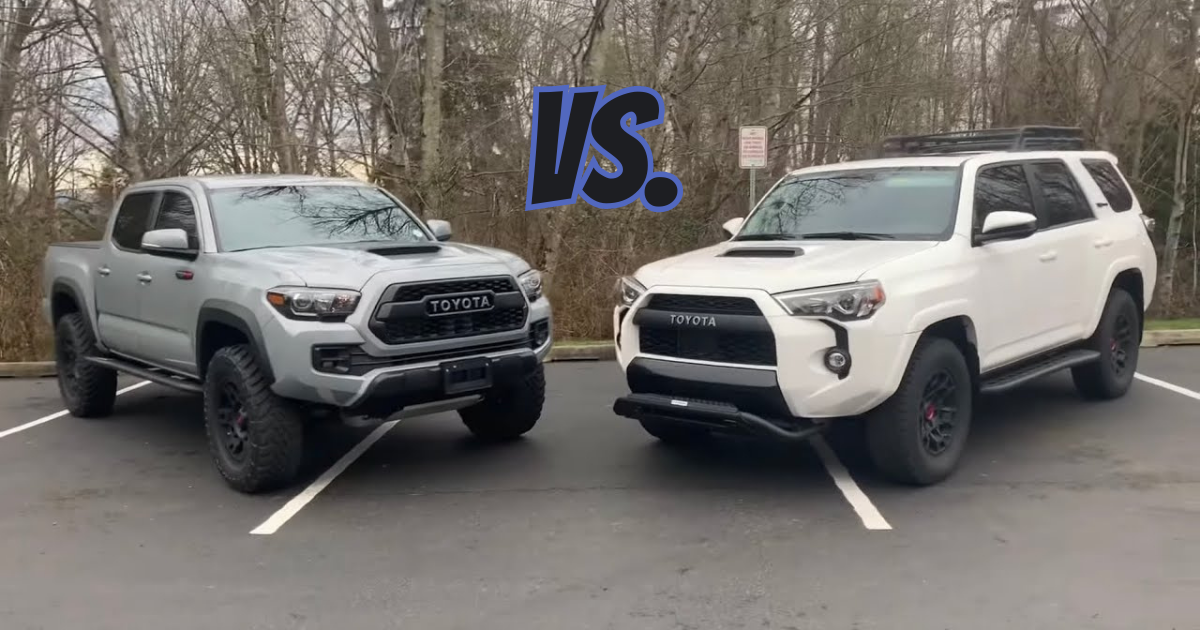
Nissan and Toyota are experts at building well-liked SUVs. A modern take on a dependable SUV, the 2023 Toyota Highlander Limited, and an off-road-oriented version of a vintage SUV, the 2023 Nissan Pathfinder Rock Creek, are both available. Is there a clear winner between the Toyota Highlander and the Nissan Pathfinder?
A Quick Comparison: Toyota Highlander vs. Nissan Pathfinder
| Point Of Comparison | Toyota Highlander | Nissan Pathfinder |
| MPG (City/Highway) | 21/29 | 21/27 |
| Seats | 8 | 8 |
| Cargo Space | 84.3 ft2 | 80.5 ft2 |
| Engine | 265-hp, 2.4-liter, 4 Cylinder Engine (Gasoline Fuel) | 284-hp, 3.5-liter, V6 Cylinder Engine (Gasoline Fuel)/ 295-hp, 3.5-liter, V6 Cylinder Engine (Gasoline Fuel) |
| Transmission | Automatic | Automatic |
| Drivetrain | All Wheel Drive, Front Wheel Drive | Four Wheel Drive, Front Wheel Drive |
| Horsepower | 265 hp | 284-295 hp |
| Towing Capacity | 5000 lb | 3000-6000 lb |
| Exterior Length | 197.7-198.8 in | 194.9-197.4 in |
| Exterior Width | 76 in | 77.9 in |
| Leg Room (Front) | Front 42 in | Front 44.3 in |
| Leg Room (Rear) | Rear 38.7 in | Rear 35.5 in |
| Head Room (Front) | Front 38.4 – 41.2 in | Front 41.1 – 42.3 in |
| Head Room (Rear) | Rear 37.1 – 39.4 in | Rear 38.4 – 39.6 in |
Comparing Price: Toyota Highlander vs. Nissan Pathfinder
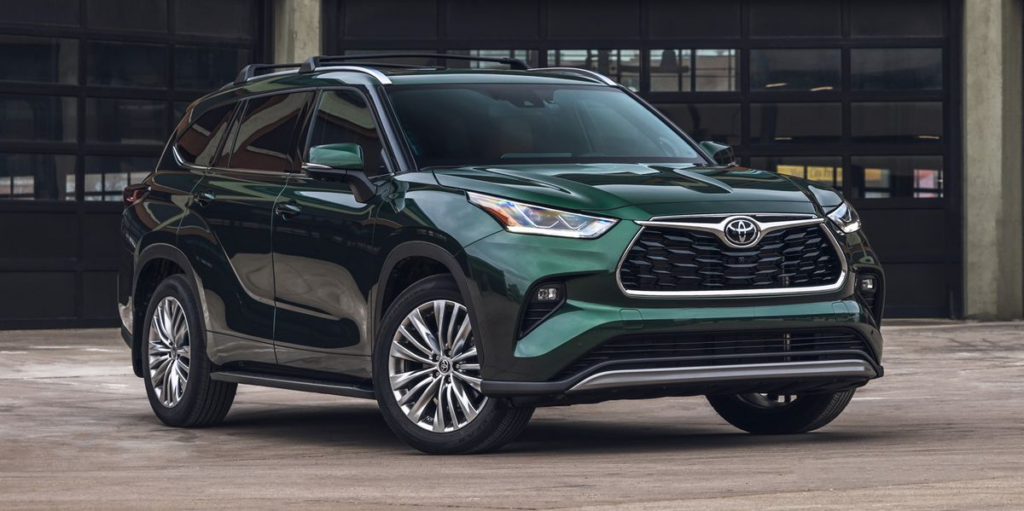
Toyota Highlander, after destination fees, the base price for the front-wheel-drive Toyota Highlander L is $37,070. The price of the all-wheel drive L is $38,670. For front-wheel drive, the LE starts at $39,270; for a hybrid drivetrain costs $40,770. The price of an LE gasoline vehicle with all-wheel drive increased to $41,295, while an LE hybrid with all-wheel drive costs $42,370.
Front-wheel drive gasoline XLE models start at $42,270, while all-wheel drive models cost $43,870. The MSRP of the XLE hybrid with front-wheel drive is $43,770; adding all-wheel drive brings the cost to $45,370. The starting price for the front-wheel-drive version of the XSE, which only has a gasoline engine, is $43,865, while the all-wheel-drive version is $45,815.
The Hylander Bronze Edition, which debuted this year, is limited to the hybrid drivetrain and all-wheel drive. It costs $45,795 on the list. The Limited, which comes in a choice of four powertrains, is the second-highest trim. All-gas Limiteds with front-wheel drive cost $46,225, while all-wheel drive vehicles cost $48,175. Front-wheel drive Hybrid Limiteds cost $48,150, and all-wheel drive models cost $49,675.
Last but not least, the Highlander Platinum, the top model, starts at $49,225 for front-wheel drive and $51,175 for all-wheel drive. The price rises to $51,150 for front-wheel drive and $52,675 for all-wheel drive when the hybrid drivetrain is included.
Related: Toyota Highlander Years To Avoid | 20 Best & Worst Years

The Pathfinder’s entry-level model, the S 2WD, costs $35,856 (all prices include a $1,225 destination fee). The SV 2WD, which is the next trim level up, costs $38,685. It may be purchased for an extra $2,170 by purchasing the Premium Package.
The Pathfinder SL 2WD costs $41,765 and comes with a $2,900 Premium Package as an option. The Platinum 2WD Pathfinder, which starts at a cost of $48,365, is the top-of-the-line model. All-wheel drive may be fitted to any Pathfinder grade for $1,900.
Comparing Cabin Space: Toyota Highlander vs. Nissan Pathfinder

The Highlander’s front-seat occupants have a headroom of 41.2 inches (975 mm), or 39.6 inches with the optional sunroof. The panoramic sunroof offered on higher levels further reduces headroom to 38.4 inches. Passengers in the front seat get 42 inches (1,067 mm) of legroom.
There are 39.4 inches (942 mm) of headroom in the second row, or 37.1 inches with the optional panoramic sunroof. There is plenty of legroom in the second row, with 41 inches (1,041 mm) of it. Regardless of the roof’s installation, third-row passengers are only permitted 36.1 inches (917 mm) of headroom and just 27.7 inches (704 mm) of legroom.
Related: 12 Best And Worst Years Of Nissan Pathfinder (Data Proofs)

Legroom in the front seats of the Pathfinder is ample at 44.3 inches (1,126 mm). Rear seat occupants only get 28 inches (712 mm) while those in the second row get 35.5 inches (902 mm).
For front-seat passengers, headroom is rated as 42.3 inches (1,075 mm) but is somewhat lowered to 41.1 inches (1,046 mm) with the optional sunroof. Without the moonroof, the second row has a headroom of 39.6 inches (1,008) and 38.4 inches (976) with it installed. Whichever roof is fitted, the third row’s headroom, which is 37.8 inches (961 mm), remains the same.
Comparing Features And Technology: Toyota Highlander vs. Nissan Pathfinder

The Highlander’s L trim includes a push-button start, tri-zone climate control, cloth seats, a power driver’s seat, and an 8-inch infotainment screen as standard equipment. The LE trim has a hydraulic lift gate, LED fog lights, and other features.
The second-row captain’s chairs, motorized passenger seat, wireless phone charging, and SoftTex seats are all included when you upgrade to the XLE. The XSE adds 20-inch wheels, external detailing in black and gray, and ambient lighting. The Limited specification level includes heated leather seating surfaces, an 11-speaker JBL audio system, and a heated steering wheel.
The Platinum trim is the top model and comes with heated second-row captain seats, a 12.3-inch infotainment system, a digital rearview mirror, a head-up display, and 360-degree cameras. On most trim levels, there are also various option packages that serve to balance out the differences between each one.

The base trim, the Pathfinder S, includes a push-button start, 18-inch alloy wheels, and a tri-zone climate control system. This model also comes with manual front cloth seats, LED headlights, and an 8-inch infotainment system. Next comes the Pathfinder SV, which includes Sirius XM satellite radio, heated front seats, a power driver’s seat, and remote engine start.
There is an extra SV. The towing package, electric liftgate, and panoramic sunroof are all included in the convenience packages.
The SL trim comes with a power liftgate, rear sunshades, heated steering wheel, LED fog lights, leather seats, and a 9-inch infotainment system. A Premium Package is an additional option for the SL trim. It has a tow package, 20-inch alloy wheels, and an improved radio.
The Platinum trim is the top-of-the-line Pathfinder model and comes with 20-inch wheels, a panoramic sunroof, a wireless phone charger, a tow package, and an improved sound system.
Comparing Style: Toyota Highlander vs. Nissan Pathfinder

Toyota Highlander’s design is being phased out since, as previously noted, the Highlander is overdue for an update. It is clearly identifiable as a Toyota SUV thanks to its corporate front fascia and steeply pointed LED headlamps. The B- and C-pillars on the Highlander are painted in black to provide the impression of a floating roof.

For this generation, the newest Pathfinder has adopted a more rugged appearance, making it appear less like a crossover and more like a regular SUV. It is squared off, but not as much as Subaru and Jeep’s boxier competitors. Nissan’s distinctive design language is featured on the front end, while the rear features a classy appearance that might be mistaken for anything from a higher price range.
Comparing Powertrains: Toyota Highlander vs. Nissan Pathfinder

A 3.5-liter V6 engine powers the Toyota Highlander with 265 horsepower and 309 lb-ft of torque, it also has a slight advantage. It makes use of an eight-speed automatic transmission that, by default, drives the front wheels. All Highlander trim levels may be equipped with all-wheel drive, just like the Pathfinder.
The Highlander, unlike the Pathfinder, offers a second drivetrain option: the Hybrid. The Highlander Hybrid’s 2.5-liter four-cylinder engine and two electric motors together provide 243 horsepower in total. All hybrid vehicles have a continuously variable automatic transmission, front-wheel drive, or electronic all-wheel drive (the latter of which uses an electric motor to move the back wheels independently of the engine).
The 3.5-liter V6 engine is still the only available powerplant for the Pathfinder with a 284 HP and 259 lb-ft of torque rating. The previous generation’s continuously variable transmission is no longer in use. Now, a nine-speed automatic transmission is in its place. All Pathfinder model levels come standard with front-wheel drive, although all-wheel drive is an option.
Comparing Fuel Economy: Toyota Highlander vs. Nissan Pathfinder
For Toyota Highlanders, the EPA estimates 29 highway MPG and 21 city MPG for each trim level that uses FWD. If you choose the AWD setup, it gets 20 mpg in the city, 27 mpg on the highway, and 23 mpg combined. The MPG ratings for hybrid vehicles are greater; regardless of the drivetrain selected, they will achieve 35 or 36 MPG in the city and 35 MPG on the highway.

Front-wheel-drive Pathfinders are rated at 21 mpg in the city and 26 mpg on the highway. The S, SV, and SL trim levels can improve their fuel economy by installing all-wheel drive. They have ratings of 21 city mpg and 27 highway mpg. The heavier Platinum 4WD is only expected to achieve 20 city and 25 highway mpg.
Comparing Safety Features: Toyota Highlander vs. Nissan Pathfinder

The Toyota Safety Sense 2.5+ system is a standard feature on every Toyota Highlander. It incorporates Lane Departure Alert, Automatic High Beams, Pre-Collision System with Pedestrian Detection, Dynamic Radar Cruise Control, Lane Tracing Assist, and Road Sign Assist.
The Star Safety System, which comprises Enhanced Vehicle Stability Control, Traction Control, Anti-Lock Brakes, Electronic Brake-force Distribution, Brake Assist, and Smart Stop Technology, is also a standard feature on Highlanders.
Standard safety systems are included with every Pathfinder. They consist of high beam assist, lane departure warning, blind spot warning, rear cross-traffic alert, automatic emergency braking with pedestrian detection, and forward collision warning.
The ProPILOT Assist technology from Nissan, intelligent lane intervention, and blind spot intervention are all included in the SV trim level. The upper two trim levels increase security. The Around View Monitor is included with the SL and Platinum.
Comparing Cargo And Towing Capacity: Toyota Highlander vs. Nissan Pathfinder
With 84.3 cu ft (2,386 L) of cargo space behind the front seats, the Toyota Highlander surpasses the overall load capacity of the Nissan Pathfinder. Space behind the second-row seats is measured at 48.4 cu ft (1,370 L), with just the third row folded. Only 16 cu ft (453 L) of cargo capacity is available, with all seats in position.
When properly equipped, the front-wheel-drive Highlander can tow 3,500 lbs (1,588 kg). All-wheel drive models’ maximum towing capacity of 5,000 pounds (2,268 kg) is a little less than the Nissan’s.
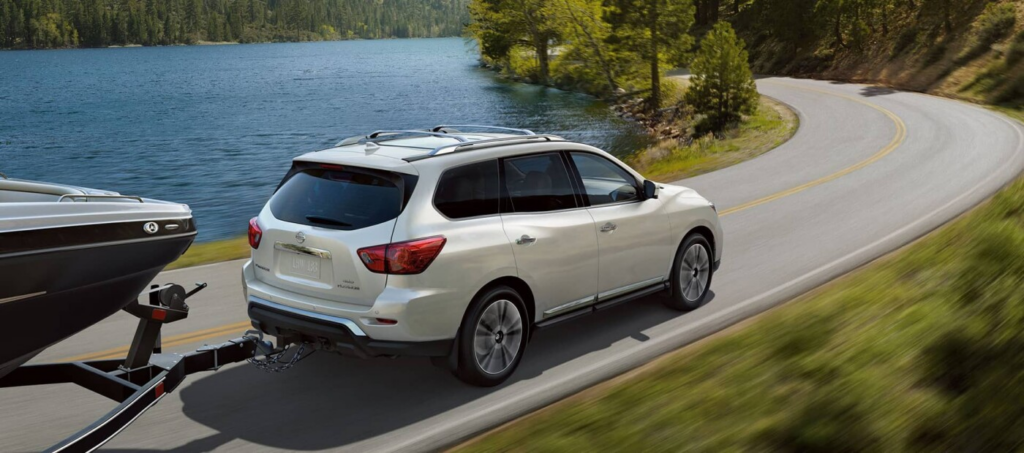
The Pathfinder has 16.6 cu ft (470 L) of cargo room below the third row. The amount of space grows to 45 cubic feet (1,274 L) with the third row of seats folded down. Fold down the second row of seats to increase cargo space to a total of 80.5 cubic feet (2,280 L).
With an official rating of 6,000 lbs (2,722 kg) when properly equipped, the Pathfinder has one of the highest towing ratings of any car in this class. Models with front-wheel drive can still lift 3,500 lbs (1,588 kg), making them respectable towers.
Toyota Highlander vs. Nissan Pathfinder: Is There A Clear Winner?
The Toyota Highlander is the better choice of the two for buyers who want the most roomy three-row midsize SUV and have some extra cash to pay. Compared to the Nissan Pathfinder, it offers larger cargo space, second-row legroom, and superior fuel efficiency ratings. Additionally, the Highlander can be more dependable than the Pathfinder.
Despite losing in this comparison, the Pathfinder is still a good midsize SUV. There is a comprehensive list of standard amenities, a wide cabin with comfortable seats, a powerful standard V6 engine, and balanced handling. The Pathfinder is a better bargain than the Highlander because of its lower starting price.

